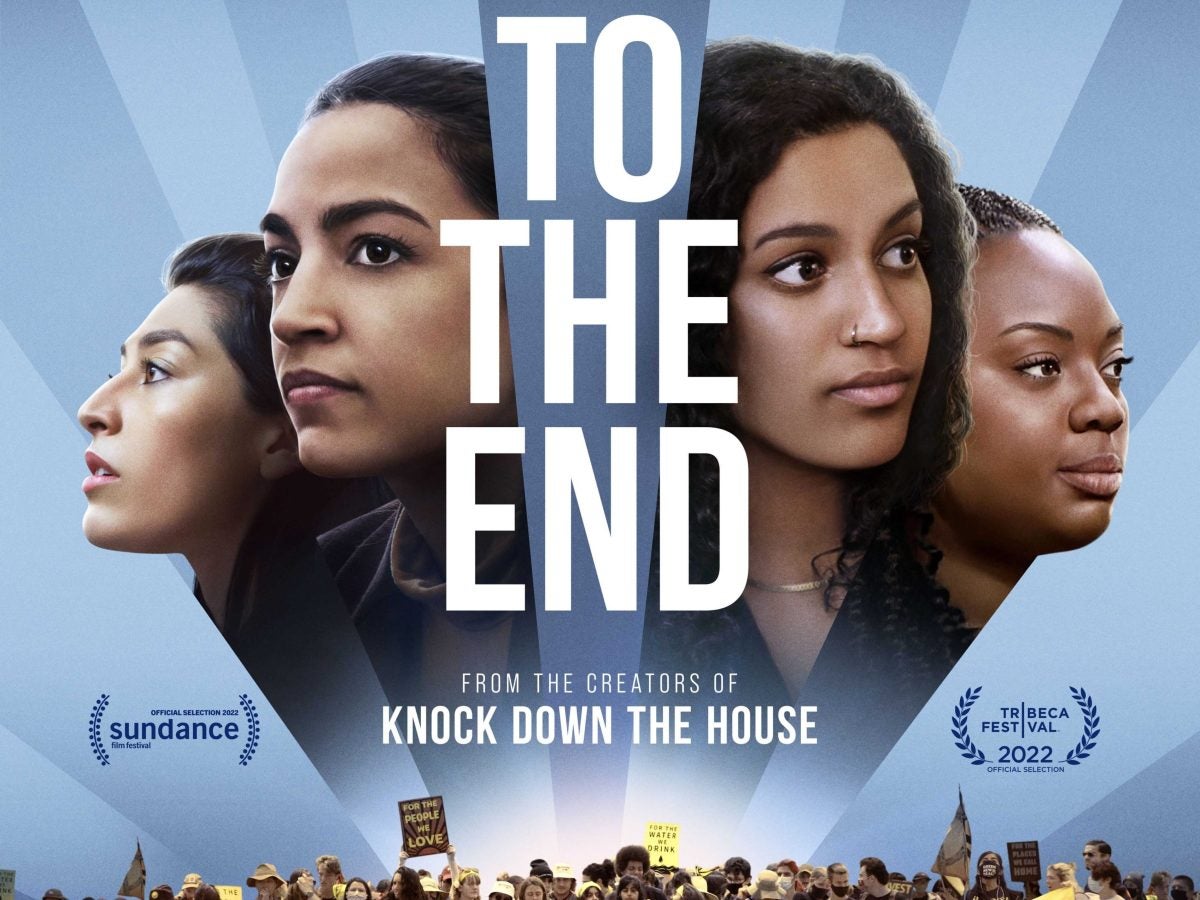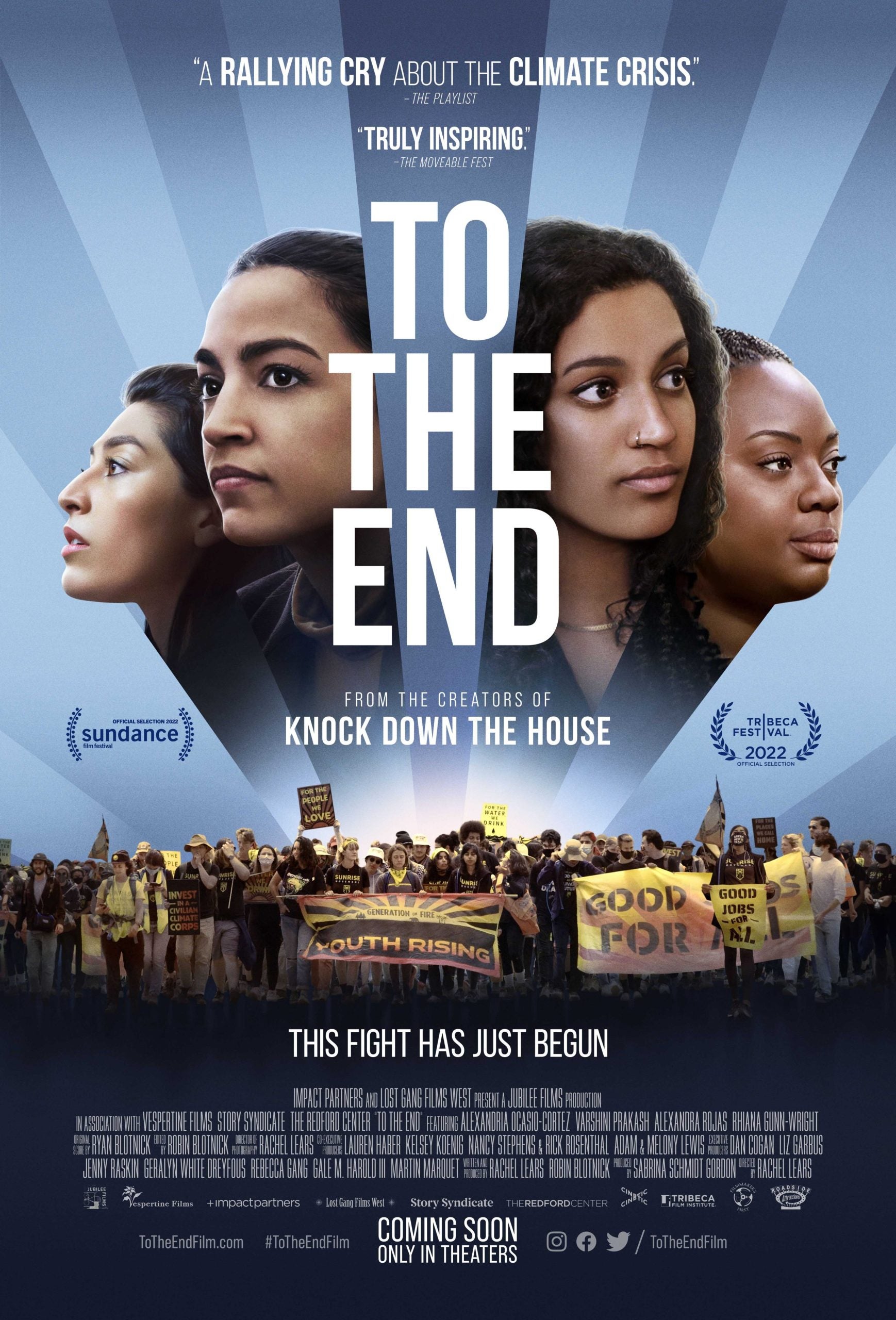
Climate change is not just an environmental issue– it’s also about racial and economic justice. That’s what film producer Sabrina Schmidt Gordon wants to relay in “To The End,” a new documentary about the construction of the Green New Deal resolution and the women of color who powered its rise to Capitol Hill.
The Green New Deal– a set of policy proposals aimed at combating climate change and creating a green, just economy–gained popularity after the 2018 midterms and culminated with a Congressional resolution in January 2019. Now, we’re given a behind-the-scenes look at how it got there, and ESSENCE spoke to some of the key figures about the work that remains.
The film documents four years of activists and leaders advocating for legislation and a change in how we talk about climate change. As the film reveals their efforts to build a better society, it explores the many layers of climate change— from the systemically racist structures that make people of color more vulnerable than others, to the combination of crisis and hope that are propelling the many activists that have taken on this fight.

“I felt like this is the first story around climate where the entry point into the conversation was one that was intersectional and that addressed, not just the climate crisis, but also economic and racial inequity. That was really an important conversation to have and one that I hadn’t seen,” said Gordon (BaddDDD Sonia Sanchez). “As a Black person, that resonated with me. A film about climate that addresses the issue in a very concrete and measurable way. A way that people can really connect the dots between the climate crisis and the way it’s impacting people’s lives in the moment, in real time.”
The film follows the four key architects of the Green New Deal: Varshini Prakash, Co-founder and Executive Director of Sunrise Movement, Alexandra Rojas, Executive Director of Justice Democrats, Rep. Alexandria Ocasio-Cortez, and Director of Climate Policy at the Roosevelt Institute, Rhiana Gunn-Wright. All of them are women of color.
“We are featuring four women of color who were the agents of change in this story, who are leaders in this movement. I felt that was important,” said Gordon. “It’s important to see folks not just as the people on the side, being sort of ‘victims’ of the crisis, but are also agents in combating it and being leaders in terms of doing something about it.”
It’s so easy for the media narratives to credit Joe Manchin, Chuck Schumer, and Joe Biden with the passage of this historic legislation. In reality, it would not have happened without the leadership of these women and their colleagues in the movement.
– Director and co-writer Rachel Lears
From the start of making this film in 2018, to its release, four years later, viewers are able to see the progress made — from the Green New Deal’s journey as a topic of discussion among political candidates, to its influence in the passing of the most significant climate legislation in U.S. history, the Inflation Reduction Act.
In telling this story, filmmakers Lears and Gordon are ensuring that these women are not left out of the conversation. “Four years later, we see the particular narrative around the passage of the Inflation Reduction Act. I think it’s incredibly important, more important than we ever imagined, to tell this story because it’s so easy for the media narratives to credit Joe Manchin, Chuck Schumer, and Joe Biden with the passage of this historic legislation,” said director and co-writer, Rachel Lears (“Knock Down the House”). “In reality, it would not have happened without the leadership of these women and their colleagues in the movement.”
Additionally, “To the End” shows viewers the power in leveraging one’s individual skillset and expertise — and more importantly, the power in coming together in collective movements.
“I love the fact that we’re presenting to the world four amazing, brilliant women of color in four different lanes of change. We have the legislative [side], we have activism, we have political strategy, and we have policy,” said Gordon.
Rhiana Gunn-Wright, the Black woman behind the Green New Deal policy, told ESSENCE that one of her favorite things about the film is the way it demystifies the policymaking process. “I think it’s mysterious on purpose. The truth is, policy is way less scientific than people think it is. It’s really important for people to know about it, so they can get involved, and so, hopefully, it brings policymaking down to the ground,” said Gunn-Wright. “Policy is nothing but collective decision making. That’s it. There’s not a lot else to it, in its most fundamental form. Much of it is about pressure. It’s about media, narrative, and the way people think about the world — things that all of us have a lot more experience with than we think.”

And that may also mean making climate change personal. As Gunn-Wright says in a scene depicted in the film, “everyone wants to talk about this dispassionately, but this is a world that I will raise my kids in.”
The film concludes with the passing of the Inflation Reduction Act. Although influenced by the Green New Deal, it doesn’t go as far to address the crisis as activists originally proposed. “Watching the film, I see what an achievement it is from the standpoint of where the U.S. started from, when it comes to where the mainstream climate discussion was. But I still have some reservations about it. The fossil fuel compromises in it are really not good. There is not nearly as much attention as I would like on the structure of the transition and how to make it equitable,” said Gunn-Wright. “There are really great investments, but there are still costs. The thing that most concerns me is that those costs are disproportionately put on people of color. And in that way, it doesn’t interrupt systemic inequity or unequal power relationships in the ways that I really would’ve liked to see.”
A lot of what climate action comes down to now is politics — it’s a political problem…As long as our political institutions and democratic institutions and rights are so lopsided, that’s going to be very difficult to fix.
– Green New Deal co-architect, Rhiana Gunn-Wright
When asked what she would like to see moving forward, Gunn-Wright expresses wanting the progressive climate movement to continue to forge ahead and to link climate and democracy. “So many of the things that are important to advancing democracy, like voting rights, abolishing the filibuster, abolishing the electoral college or at least deeply amending it, expanding the Senate, are actually really important for climate action to be able to move forward. Especially if we want it to look more just,” she said. “A lot of what climate action comes down to now is politics — it’s a political problem. We have a lot of ideas about how to do things, but we don’t have the political power to do them. As long as our political institutions and democratic institutions and rights are so lopsided, that’s going to be very difficult to fix,” said Gunn-Wright.
Nonetheless, Gunn-Wright is still hopeful. “A lot has shifted. I think that makes some of these changes easier. A lot of people, especially folks younger than me, care about climate, and [they] think about it in much more ‘Green New Deal’ ways than even folks in my generation do or did. That gives me hope. I am hopeful,” she said. “Plus despair doesn’t really serve anybody except the folks who are already in power.”





